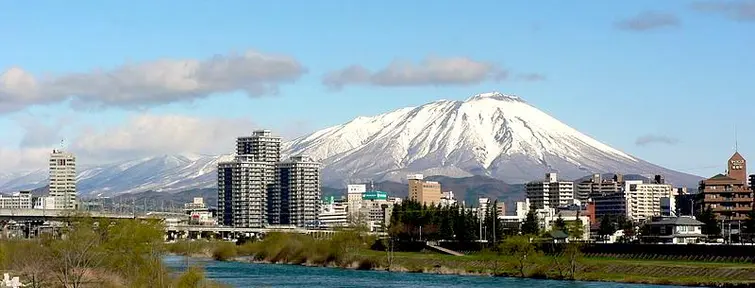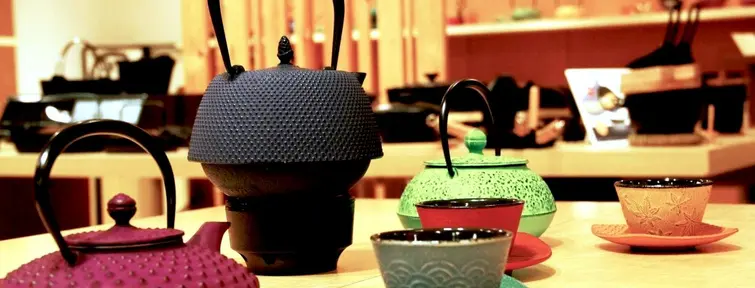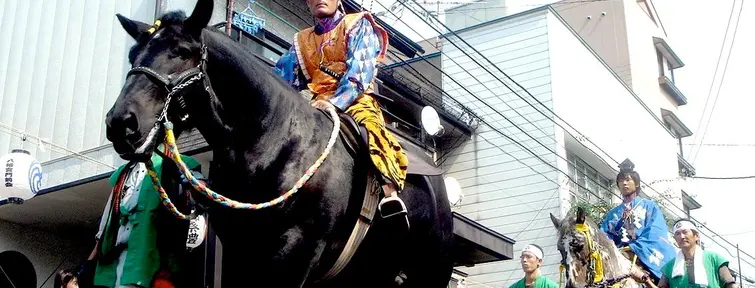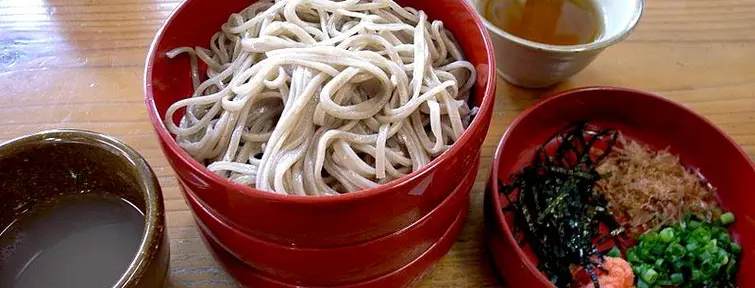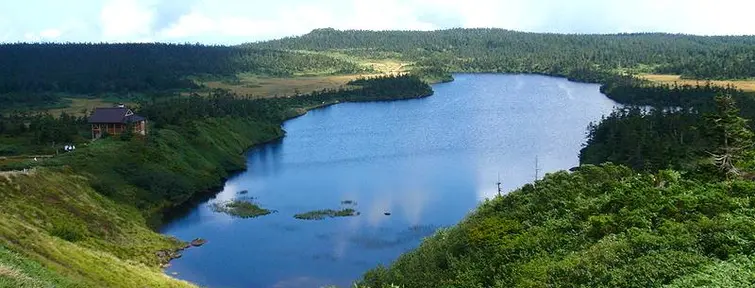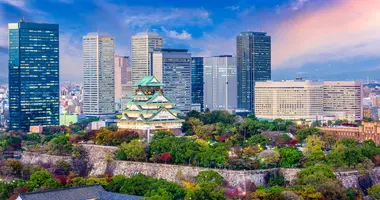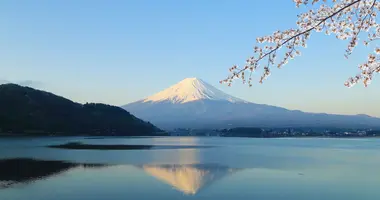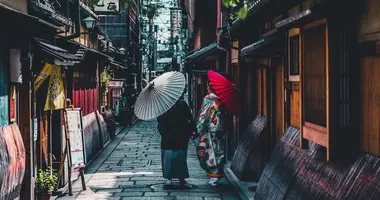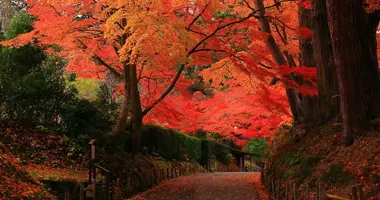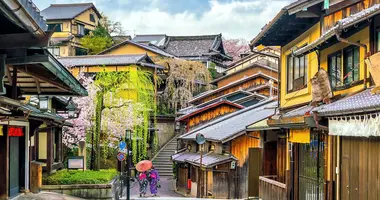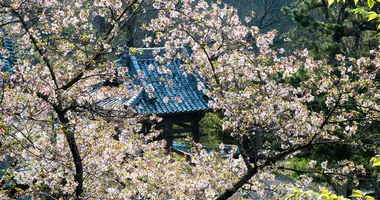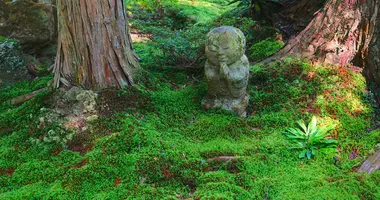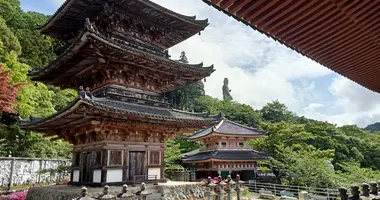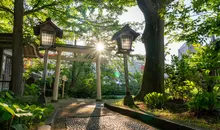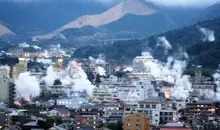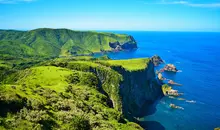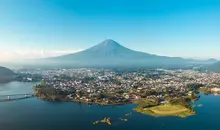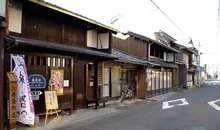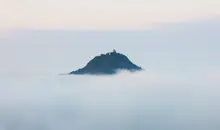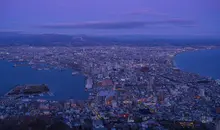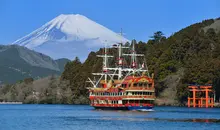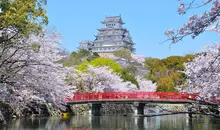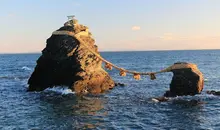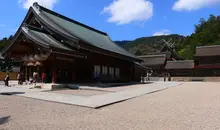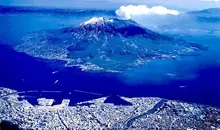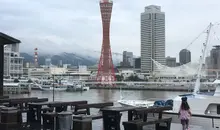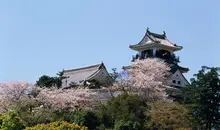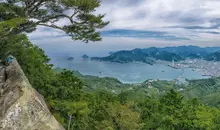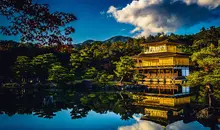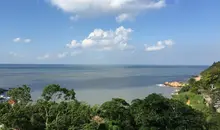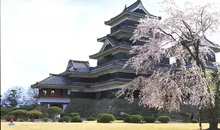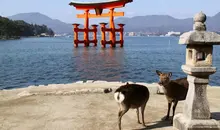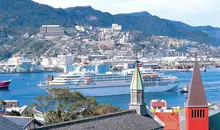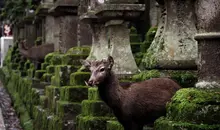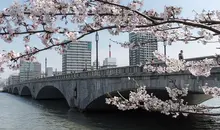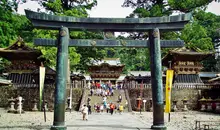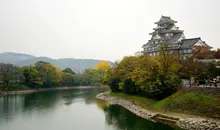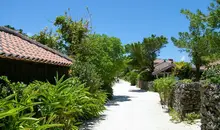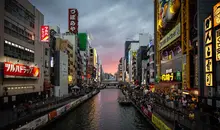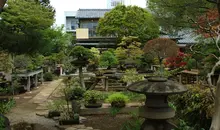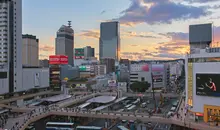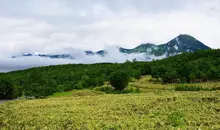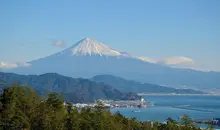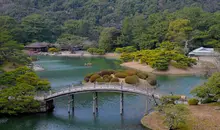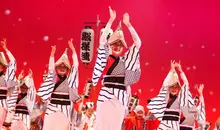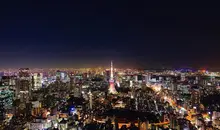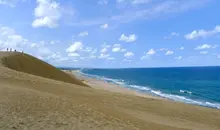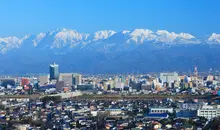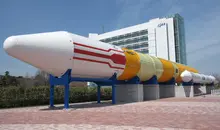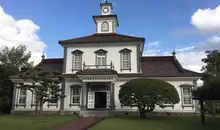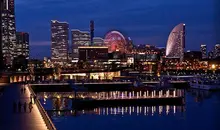Morioka
- Published on : 17/08/2017
- by : G.L.
- Youtube
Local Time 19:46
Symbol : cloudy_rainy
Temp : 4.5°C
Date : Today
Symbol : cloudy_snowy
Temp : 1.4°C
Date : Tomorrow
Symbol : sunny_cloudy
Temp : -2.3°C
Date : Saturday
Symbol : sunny_cloudy
Temp : -1.2°C
Date : Sunday
Local Time 19:46
Symbol : cloudy_rainy
Temp : 4.5°C
Date : Today
Symbol : cloudy_snowy
Temp : 1.4°C
Date : Tomorrow
Symbol : sunny_cloudy
Temp : -2.3°C
Date : Saturday
Symbol : sunny_cloudy
Temp : -1.2°C
Date : Sunday
Cold and warm
Nestled in the heart of the Iwate prefecture in northern Japan, Morioka is an authentic town still little-known to Western tourists, yet well worth exploring. Accessible by Shinkansen from Tokyo in just over two hours, this city of 300,000 inhabitants offers a fascinating immersion in traditional Japanese culture, far off the beaten track. Renowned for its exceptional handicrafts, notably cast-iron teapots and lacquerware, Morioka also attracts visitors with its colorful festivals, local gastronomy and surrounding natural landscapes. Between tradition and modernity, this human-sized town is an ideal starting point for discovering the riches of the Iwate region, with its typical northern Japanese climate, cold in winter and pleasantly cool in summer.
How to get to Morioka and when to visit
Getting to Morioka is particularly easy thanks to Japan's rail network. The quickest way is to take the Shinkansen from Tokyo, a journey that takes around 2h15 with the Tohoku Shinkansen or the Akita Shinkansen. This high-speed line, inaugurated in 1982, has contributed considerably to the city's development and facilitated access for travellers.
As for the ideal time to visit Morioka, it largely depends on your interests. Spring (April-May) offers an enchanting spectacle of cherry blossom, particularly in Iwate Park, where the blossoms reach their peak around mid-April. Summer (June-August) is marked by major festivals, including the famous Sansa Odori from August 1 to 4, the world's largest taiko drum festival. Autumn adorns the surrounding area with flamboyant colors, while winter, although harsh with abundant snowfall, allows you to discover the city under a white coat and access the surrounding ski resorts.
It's worth noting that Morioka's climate is typical of northern Japan: winters are cold (average temperatures of -7°C to 0°C in January) and summers relatively mild (20°C to 28°C in August), making it a pleasant destination to escape the sweltering heat that can overwhelm other parts of Japan during the summer season.
Traditional crafts, the pride of Morioka
Handicrafts are undoubtedly one of Morioka's most precious treasures, and the town is justifiably proud of them. Nambu Tekki is one of the crafts that have made Morioka famous. This enamelled casting technique dates back to the 17th century, when craftsmen from Kyoto, who had settled in Morioka at the request of the Nambu clan who then ruled the region, began producing teapots, weapons and bells for the temples.
In Suzuki Morihisa's workshop, established in 1625, you can admire the skills of the craftsmen who forge these cast-iron objects using ancestral techniques. Nambu Tekki teapots are particularly prized for their exceptional quality and ability to preserve heat, making them ideal for tea preparation. Their reputation extends far beyond Japan's borders, as evidenced by their adoption by leading European tea houses.
Morioka is also one of the birthplaces of the famous kokeshi dolls, sleek wooden figurines traditionally lathe-made and hand-painted. At the Morioka Tezukuri Mura craft center, visitors can take part in workshops to learn how to paint these emblematic dolls.
Lacquerware is another major local specialty. Two styles coexist in the region: Hidehira-nuri, focused on rich motifs, and Joboji-nuri, more focused on everyday use, with its glossy, hard-wearing black and red lacquers. A visit to the Urumi Kôgei store allows you to discover these creations and even take part in introductory workshops.
For craft enthusiasts, Morioka Handi-Works Square is a must. Located some thirty minutes by bus from the city center, this complex comprises fourteen buildings housing twelve different craft trades. Visitors can watch the craftsmen at work behind large windows, then purchase their creations in the adjoining stores, which offer over 4,000 items.
Must-see sites in the city center
Although Morioka is not as rich in historical monuments as some of Japan's more touristy cities, it does boast several sites of interest that are well worth a visit. Iwate Park is the ideal starting point for exploring the city. Situated between the banks of the Nakatsu River and the Odôri shopping mall, this park was created on the former site of Morioka Castle, of which a few walls remain. Built in the mid-16th century by the powerful Nambu clan, the castle gave rise to a jôkamachi, a "city under the castle" typical of traditional Japanese urban planning.
Leaving the park via Nakanohashi Bridge, you come to the Nakanohashi district, home to a number of Western-style buildings dating from the Meiji era. The most famous of these is undoubtedly the former Nakanohashi bank headquarters, recognizable by its red brick and white granite facade. This district is also the birthplace of nambu tekki, the enamelled cast-iron technique for which Morioka is still famous.
Heading north along the Nakatsu River, you soon reach the traditional district of Konya-chô, whose symbol is the old firefighters' observation tower (Konyachô banya). Lively and gourmet, this district is the ideal place to sample local culinary specialties, from Nambu Sembei sesame rice cakes to gyûtan (grilled beef tongue).
You can continue your stroll by taking the Higashibashi Bridge, which leads to the temple district, Morioka's second most important green space. Here you'll find several Buddhist buildings, including Hôon-ji with its 500 statues of Buddha disciples, and the Shinto shrine Mitsuishi-jinja. To the east, the park is also home to the interesting Morioka Central Public Hall, where you can learn more about the region's history and traditions.
Parks and natural areas around Morioka
Morioka is surrounded by stunningly beautiful natural landscapes, dominated by the majestic silhouette of Mount Iwate. Nicknamed the "Fuji of the South" (Nambu Fuji) because of its resemblance to the famous Mount Fuji when viewed from the south, this iconic 2038-meter-high mountain offers a panorama that changes depending on the angle from which it is admired. Hikers can take one of seven trails to the summit, but it's a good idea to check their level of difficulty beforehand.
Near Mount Iwate, the Yakehashiri lava flows are a fascinating geological site. Remnants of the volcano's last eruption in 1732, they offer visitors the chance to stroll through a lunar landscape, where vegetation is still struggling to reestablish itself. The walk is particularly impressive, but is best avoided during the hottest hours of summer, as the lack of shade makes for a strenuous excursion.
For winter sports enthusiasts, the region around Morioka is packed with quality ski resorts, such as Appi, located an hour north of the city. Considered one of the best resorts in Japan, it offers 21 runs for all levels. After the effort, the hot springs (onsen) of the Tsunagi region offer a welcome moment of relaxation to soothe aching muscles.
Further north, the mountainous Hachimantai region is an ideal playground for nature lovers, with its many hiking trails, volcanic lakes and hot springs. In autumn, the spectacle of glowing foliage is particularly striking, while in winter, the "snow monsters" (juhyo), trees covered in frost and snow, create an enchanting landscape.
Festivals and cultural events not to be missed
Morioka comes alive throughout the year with colorful traditional festivals that offer travelers an authentic immersion in Japanese culture. The most famous of these is undoubtedly the Morioka Sansa Odori, held every year from August 1 to 4. Recognized by the Guinness Book of Records as the world's largest taiko drum festival, this spectacular event brings together more than 10,000 drums that resound throughout the city.
For four days, long parades of dancers and musicians roam the streets of Morioka from 6 p.m. to 9 p.m., creating an electrifying atmosphere. The festival reaches its climax on the final evening, when the public is invited to join in the dancing for a moment of intense communion. Considered one of the five major festivals in the Tohoku region, it attracts thousands of visitors every year.
Another major event, the Morioka Autumn Festival (Aki Matsuri) features finely decorated floats, accompanied by taiko drummers and dancers, parading through the city. On the final day, spectators can watch an impressive demonstration of archery on horseback at the Morioka Hachimangu shrine, a traditional practice believed to guarantee good harvests as well as peace and security.
For music lovers, the Ishigaki Music Festival in September features ten stages spread throughout the city, the main one in Iwate Park. Even if music isn't your first passion, the festive, convivial atmosphere is well worth a visit.
In February, the Iwate Snow Festival enlivens several sites in the region, including the Koiwai farm near Morioka. Snow sculptures, snow games, fireworks and tastings of the farm's delicious dairy products make up the program for this family-friendly winter event.
Local gastronomy and culinary specialities
Morioka's gastronomy is one of the city's most appealing facets, with culinary specialties that have made it famous throughout Japan. Among them, the "three Morioka noodles" take pride of place: jajamen, reimen and wanko soba, each offering a unique taste experience.
Jajamen are udon noodles served with a meat and miso sauce, accompanied by green onions and cucumber. What makes this dish so special is the ritual of eating it: when there's a little sauce left over, a beaten egg and broth are added to create a tasty soup to round off the meal.
Reimen, a local Korean-influenced variant of râmen, are eaten cold in a refreshing broth, topped with sliced beef, hard-boiled egg, cucumber and sometimes fruit such as apple or watermelon. Introduced to Morioka in the 1950s by the Korean community, they have become a staple of summer menus.
As for wanko soba, these are small bowls of buckwheat noodles served according to a unique ritual: waiters constantly refill your bowl until you indicate that you're full by placing a lid on it. This gastronomic challenge has given rise to the "Wanko Soba Challenge", where participants attempt to consume as many bowls as possible - the local record standing at over 500 bowls in a single meal!
In addition to these emblematic noodles, Morioka offers other local specialties such as Nambu Sembei sesame rice cakes, whose origins date back to the 14th century. Meat also plays an important role in local gastronomy, with Iwate beef and pork renowned for their exceptional quality, and gyûtan (grilled beef tongue), a specialty popularized by neighboring Sendai.
To accompany these dishes, sakes produced in the region, notably by the Nanbu Bijin brewery in Ninohe, offer subtle, refined aromas that perfectly complement the local flavors. Sake lovers can sample these beverages in the many sake bars scattered around the city, notably near the railway station and in the Uchimaru district.
Excursions and activities around Morioka
Morioka is an ideal base for exploring the many treasures of Iwate Prefecture. Around 40 kilometers south of the city, Hiraizumi is well worth a day trip. This ancient city, which once rivalled Kyoto in terms of splendour, is home to two UNESCO World Heritage Sites: the Chūson-ji temple, famous for its golden pavilion (Konjikidō) entirely covered in gold leaf, and the Mōtsū-ji temple, of which all that remains is the magnificent Japanese garden surrounding a peaceful pond, designed to represent the "Buddhist Pure Land Paradise".
Still to the south, the town of Ichinoseki offers three remarkable sites: the Takkoku Seikōji temple, built right into the rock, and the Genbikei and Geibikei gorges. The latter, often confused due to the similarity of their names, offer complementary experiences: at Geibikei, a cruise takes you deep into the corridor formed by impressive cliffs, while at Genbikei, a walk along the water offers different views of the rock formations and small waterfalls.
For history buffs, the reconstructed village of Tono Furusato offers a glimpse of rural life in Japan during the Edo period, with its traditional farms (magariya) where people and animals lived side by side. The Tono region is also rich in legends and folklore, as evidenced by the collection "Tales of Tono" published in 1910 by ethnologist Kunio Yanagita.
Further north, the Koiwai farm, one of Japan's largest, offers a variety of activities throughout the year: tasting of dairy products renowned throughout the country, horseback riding in summer, and snow sculptures during the winter festival. Its vast meadows, set against the backdrop of Mount Iwate, offer a particularly photogenic bucolic landscape.
Finally, for those wishing to discover Iwate's Pacific coast, Jōdoga beach, with its pebbles and transparent waters, and the spectacular rock formations of Sannoiwa, make for exotic excursions around two hours' drive from Morioka. Although these sites bear the scars of the 2011 tsunami, they testify to the resilience of this region, which is gradually recovering from the disaster.
Our tours in Morioka
Interested by Morioka
Discover other cities to explore
